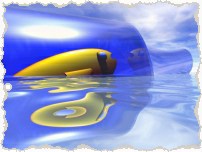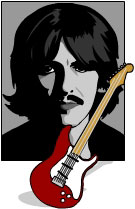Let it Be... Naked
Created | Updated Nov 19, 2003

On Monday 17th November 2003, nearly
thirty four years after the original recordings, the
Beatles Let It Be album has finally been
released as originally intended.
Behind The Original Recordings

When the Beatles finished recording The White Album1 in October 1968 they were
unsure of what to do next. By January 1969, Paul McCartney was enthusiastic about working with a specific aim in mind - a live concert of new songs. Although the final venue for this concert was never
agreed, although several locations were suggested, including the Albert Hall, a ship, the Sahara Desert or a Roman amphitheatre, work for this, the Get Back project began.
Glyn Johns worked as balance engineer and an uncredited producer, and Denis O'Dell was appointed as producer of the TV Show, and he suggested that the rehearsals should themselves be filmed to create a
documentary on Beatles At Work, with Michael Lindsey-Hogg as director.
The project suffered difficulties from its start on the 2nd January. Principally, being constantly filmed in the Twickenham Film Studio, under eternal surveillance, had a claustrophobic atmosphere. The Twickenham studio building itself did nothing to help the mood as the studio lights sometimes made it
unbearably hot inside, yet it also suffered from chilling draughts.
By Friday 10th January the idea collapsed. Paul McCartney had an argument with John Lennon, and George Harrison had had enough, and said that he was leaving the Beatles, saying 'See you
round the clubs!'. George Harrison later described the Get Back sessions as 'the low of all time' and John Lennon agreed by calling them 'Hell.. the most miserable sessions of all
time'. On Wednesday 15th George had a meeting with the other three and said he would return to the Beatles on two conditions. That they made an album and not a live performance, and also move from
Twickenham Film Studios into the Apple Building.
The Apple Sessions
The Apple recording sessions were a lot happier than at Twickenham. Not only was the building more comfortable and a familiar place, but also because Billy Preston, a talented pianist and old friend, was
brought in to play too. The Beatles had met Billy Preston during their Hamburg days in 1962 at the Star Club, where Billy Preston was in Little Richard's backing group.
The Concert On The Roof
On Thursday 30th January, eleven songs were performed outside on the roof in what was the Beatles' last live performance, three versions of Get Back, two of Don't Let Me Down and I've Got A Feeling, as well as The One After 909, Dig A Pony, God Save The Queen plus a few seconds of Danny Boy. George Harrison, though, only sang on I've Got A Feeling, not being entirely convinced by the idea. By the beginning of the third performance of Get Back, the Police had arrived
and the performance was over.
The next day, Friday 31st January 1969, the final Get Back session was completed, with indoor performances of the quieter songs The Long,And Winding Road, Let It Be and Two Of
Us which were felt to be unsuited for an outside performance. The project was abandoned, and the Beatles were fed up of the whole idea. Glyn Johns, though, worked to make the material recorded in January into an album.
The Unreleased Get Back Albums
He produced two versions, one on the 28th May 1969, and the other on 5th January 1970. On the second version it
was decided to include two more songs that had been included in the film Let It Be. The first was John's superb Across The Universe, which had been recorded back in February 1968
and had been released on the World Wildlife Fund December 1969 charity album No-One's Gonna Change My World2. The
second was George's I Me Mine, the only Beatles song to be recorded in the 1970s.
The Get Back Albums
| The 1969 Album | The 1970 Album |
|---|---|
|
|
The album cover was designed to show that the Beatles had gone full circle, as it showed the Beatles in a pose identical to the one they had used on the cover of Please Please Me, their first album.
Even the words used on the front cover were similar, using the same font. It said 'GET BACK with Let It Be and 11 other songs', echoing 'PLEASE PLEASE ME with Love Me Do and 12 other songs'. This photo, though not used for the Get Back project was later used on the The Beatles 1967-1970 Blue Album.
In the end, neither version of the Get Back album was used. On the 3rd January 1970, the band returned to work on songs for the album recording I Me Mine. After two days more work,
the second Get Back album version was produced. The Beatles were unsure as to whether they liked the album or not, and again abandoned the project.
The Original Let It Be
On Monday 23rd March Phil Spector started work on John and George's invitation to re-produce the Get Back tapes. It was from this moment on that the project started to be called Let It Be, along
with the film that was accompanying it. By the 2nd April Phil Spector finished. The album was released on the 8th May.
Paul McCartney, who had opposed Phil Spector's appointment from the beginning, was unhappy with the album. He objected to the overdubbed sounds that had been placed on his songs without his permission,
especially The Long And Winding Road had been treated. He also felt that his song Let It Be had been deliberately sandwiched between the albums weakest songs, Dig It and Maggie Mae,
neither of which are even full length. It was introduced by John Lennon's degrading and spiteful comment, 'And Now We'd Like To Do 'Ark The Angels Come'.
He had attempted to have the album changed before release, but was
ignored. Let It Be... Naked is not only the version of the album he would have wanted, but one with only the sounds that Beatles and Billy Preston recorded - without Phil Spector's 'Wall Of Sound'
background noise.
The Two Let It Be Albums
| Let It Be 1970 | Let It Be... Naked |
|---|---|
|
|
Let It Be... Naked
So, how does Let It Be... Naked compare to the original Let It Be? Although there are many who have automatically branded this album release a pure exercise in trying to con fans out of more money and at first glance may not notice any difference from
the version of Let It Be that has existed since 1970, Let It Be... Naked is, in fact, quite a different album. It is a purer Beatles experience and the better for it, with Phil Spector's 'Wall Of Sound' approach sounding quite dated and even cheesy in places.
That the album has removed many of the original speeches can
only be considered a good thing; comments such as 'I Dig A Pygmy By Charles Hawtry And The Deaf Aids - Phase One In Which Doris Gets Her Oats' failed to add anything to the album originally. The album
design, too, is effective, even if not the original Get Back design. Not only is it a reminder of the original Let It Be design it continues the album laid bare ethos with the negatives of the famous photos on the cover.3
The album is short, at only thirty-five minutes long, yet the bonus 'Let It Be... Naked - Fly On The Wall' disc features rehearsal material from the recording sessions, and adds an invaluable insight behind the making of the album. The running order seems more logical, with the song Let It Be being a fitting end to the album and a natural follow-on from Across The Universe. That the
short extracts Dig It and Maggie Mae are missing does not adversely affect the album as short extracts from them are both present on the Fly On The Wall disc.
The inclusion of Don't Let Me Down - released as the Get Back single's B-Side in April 1969, more than makes up for their absence and is a logical inclusion to the album as it was on both
the Get Back album versions compiled by Glyn Johns.
There are other tracks which could have been included on the Let It Be... Naked album. These include Teddy Boy, Rocker, and Save The Last Dance For Me, all of which were on the original Get Back line ups. Teddy Boy was a
Paul McCartney song, and was on Paul McCartney's McCartney album. A version dating from the Let It Be sessions is on the Beatles Anthology. Rocker was a group instrumental,
and is unavailable. Save The Last Dance For Me was a song originally released by The Drifters in 1960, but had often been sung by John during their Liverpool and Hamburg days. The original version of Dig It lasted just under four minutes, but the version that ended up on the Let It Be album was only 58 seconds long. Even though it is a jam and not a fully developed song, the
full version could perhaps have been included on the new album.
All in all, Let It Be... Naked is an album well worth listening to. It was an album all but demanded by Beatles fans after hearing the unadulterated The Long And Winding Road on the
Beatles Anthology. Although many of the songs on Let It Be... Naked did indeed appear on the Beatles Anthology albums4, the songs on Let It Be... Naked are full length and high quality.
Let It Be... Naked is essentially the pure, unchanged realisation of the Beatles' vision. George Harrison, John Lennon and Paul McCartney were undoubtedly the best songwriters of their era and Phil Spector's wall of sound dubbs and sound effects only interfered with that. Paul McCartney has said,
If we'd have had today's technology back then, it would sound like this because this isAnd who can argue with that?
the noise that we made in the studio. It's all exactly as it was in the room. You're right there now.
Wherefore Art? whose album artwork includes the 2001 re-release of George Harrison's classic All Things Must Pass album.4One After 909, I've Got A Feeling, Dig A Pony, Two Of Us, For You Blue, The Long And
Winding Road, Get Back and Let It Be
